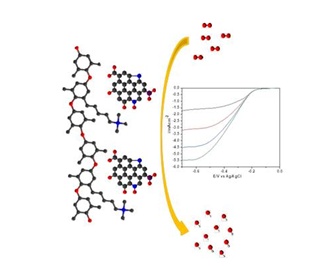Electrochemical energy storage and conversion (EESC) systems require an efficient separation of positive and negative electrode compartments by an ionic conducting and electron blocking solid electrolyte. In future technologies, solid electrolytes are preferred, because they allow miniaturization and present a better long-time stability and safety than liquid electrolytes. Moreover, the development of highly efficient catalytic electrodes is another challenge for Fuel Cells and Water Electrolysers tackled by the combination of electron-conducting catalysts and ion conducting binders.
Electrocatalytic reactions occur at the triple-phase boundaries (TPB), where ion-conducting binder, electronically conducting catalyst and the reactant coexist. The optimization of the electrocatalytic properties requires therefore a subtle balance of the composition and distribution of catalyst and ionic conductor, typically on an electronically conducting support, such as carbon paper.
We have studied heteroatom-doped carbon quantum dots (CQD), such as N-, B-N-, Si-N, and S-N- CQD as electrocatalyst for the oxygen reduction reaction (ORR) in alkaline solution. In alkaline environment, anion exchange ionomers (AEI) act as binder of the catalyst particles, creating additional pathways for the hydroxide transport between the reaction sites on the catalyst and the anion exchange membrane (AEM). Aggregation of the catalyst and the consequent poor homogeneity of the Catalyst Layer (CL) are one of the deterring factors of the fuel cell performance. To ensure a large TPB area, the ionomer binder should interact with the catalyst particles, behave as a good dispersant, avoid agglomeration and ensure a rapid hydroxide transport from the CL. Furthermore, the AEI should present a sufficiently high oxygen permeability in order to reduce the oxygen transport resistance.
The role of the AEI ratio with respect to catalyst and carbon is a crucial factor: a great amount of ionomer reduces the porosity and increases the mass transfer resistance; a small amount leads to aggregation, a low utilization of the active sites of the catalyst, and an insufficient TPB. A further important issue regards the adsorption of AEI on the electrodes, which blocks the catalyst activity and inhibits the efficiency of the CL: strong interactions are observed for AEI containing phenyl groups. Last but not least, the AEI must present a good thermal and chemical stability. Different AEI containing trimethylammonium groups were studied with different backbones, presenting various hydrophobicity, and quaternary ammonium groups placed on side chains with different length.
